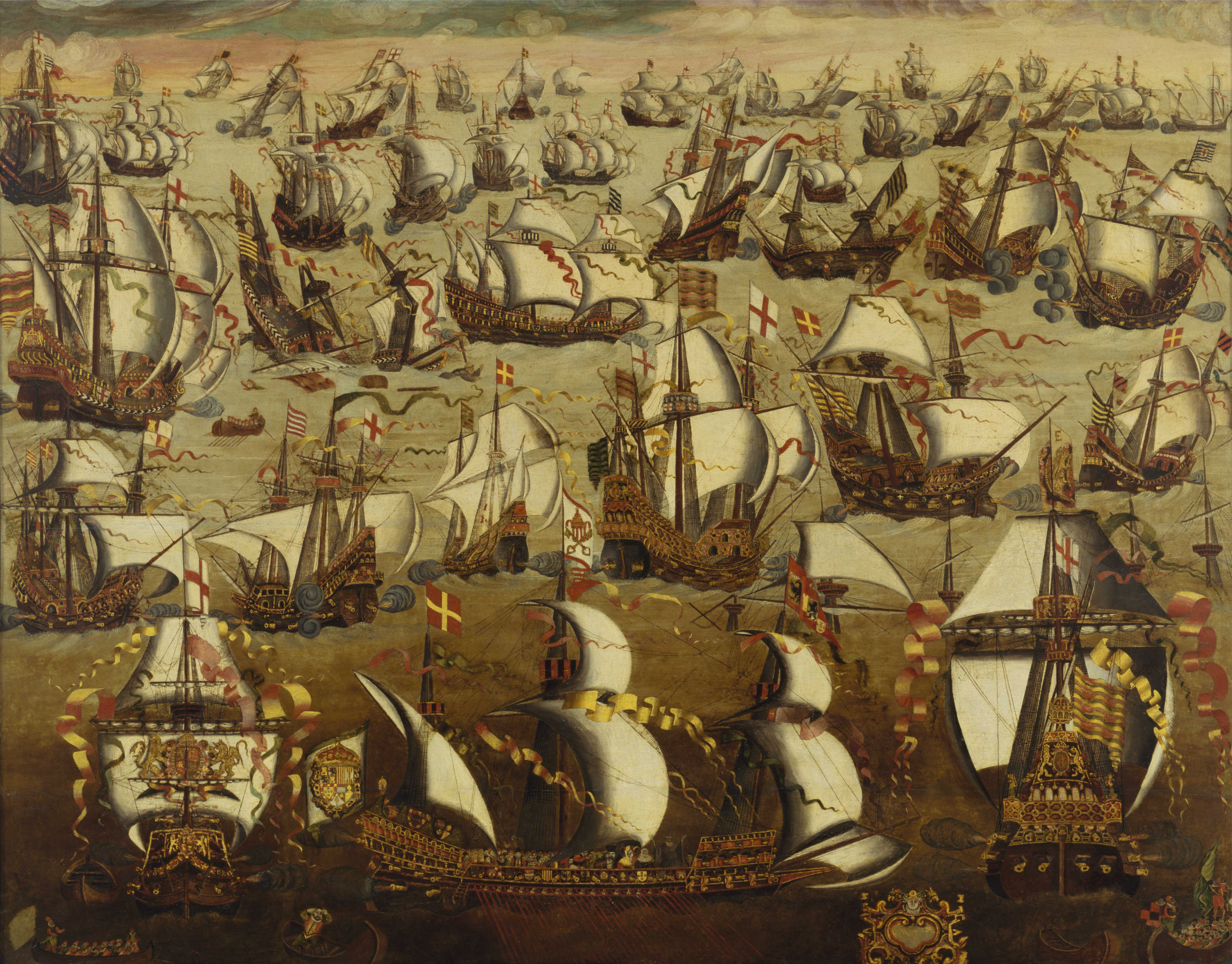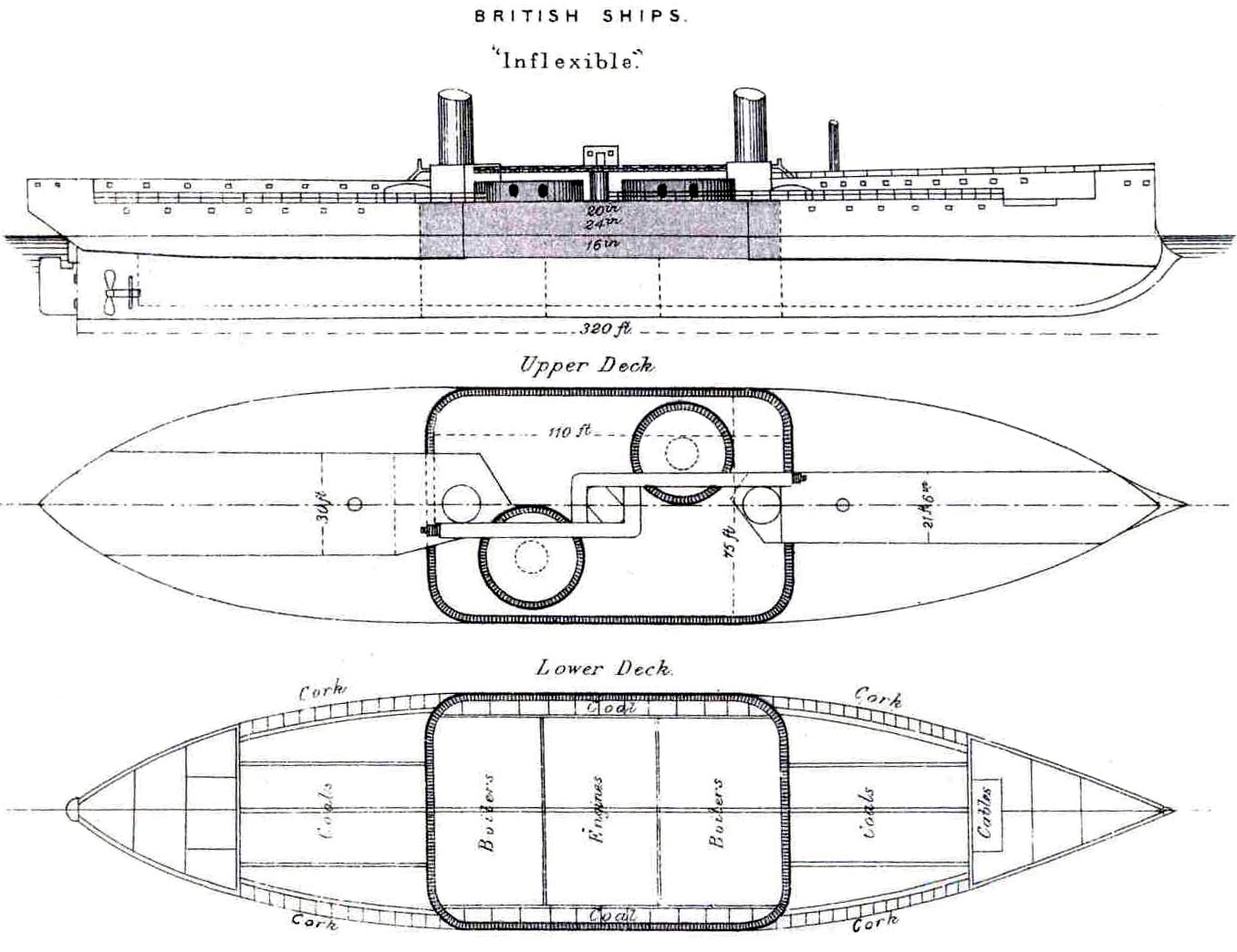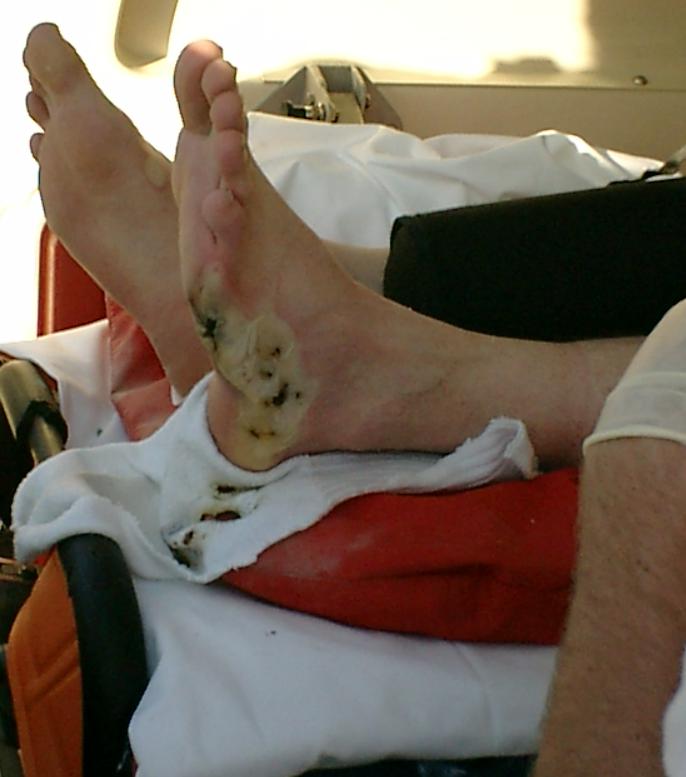|
HMS Polyphemus (1881)
The third HMS ''Polyphemus'' was a Royal Navy torpedo ram, serving from 1881 until 1903. A shallow-draft, fast, low-profile vessel, she was designed to penetrate enemy harbours at speed and sink anchored ships. Designed by Nathaniel Barnaby primarily as a protected torpedo boat, the ram was provided very much as secondary armament. It has been suggested that H. G. Wells’ fictional HMS ''Thunder Child'' from his novel ''The War of the Worlds'' may have been based on this ship, in part because he described ''Thunder Child'' as an ironclad torpedo ram, and ''Polyphemus'' was the only ship of this type which the Royal Navy possessed. However, not being a naval person Wells may have been using the term loosely, assuming that all ram-bowed vessels were called torpedo rams. This is likely given that the fictional ship does not match the other particulars, such as number of funnels, size & weaponry, of HMS ''Polyphemus''. Design The Admiralty set up the "Torpedo Committee" ... [...More Info...] [...Related Items...] OR: [Wikipedia] [Google] [Baidu] |
Naval Ensign Of The United Kingdom
The White Ensign, at one time called the St George's Ensign due to the simultaneous existence of a cross-less version of the flag, is an ensign worn on British Royal Navy ships and shore establishments. It consists of a red St George's Cross on a white field, identical to the flag of England except with the Union Flag in the upper canton. The White Ensign is also worn by yachts of members of the Royal Yacht Squadron and by ships of Trinity House escorting the reigning monarch. In addition to the United Kingdom, several other nations have variants of the White Ensign with their own national flags in the canton, with the St George's Cross sometimes being replaced by a naval badge omitting the cross altogether. Yachts of the Royal Irish Yacht Club wear a white ensign with an Irish tricolour in the first quadrant and defaced by the crowned harp from the Heraldic Badge of Ireland. The Flag of the British Antarctic Territory and the Commissioners' flag of the Northern Lig ... [...More Info...] [...Related Items...] OR: [Wikipedia] [Google] [Baidu] |
Chatham Naval Dockyard
Chatham Dockyard was a Royal Navy Dockyard located on the River Medway in Kent. Established in Chatham in the mid-16th century, the dockyard subsequently expanded into neighbouring Gillingham (at its most extensive, in the early 20th century, two-thirds of the dockyard lay in Gillingham, one-third in Chatham). It came into existence at the time when, following the Reformation, relations with the Catholic countries of Europe had worsened, leading to a requirement for additional defences. Over 414 years Chatham Royal Dockyard provided more than 500 ships for the Royal Navy, and was at the forefront of shipbuilding, industrial and architectural technology. At its height, it employed over 10,000 skilled artisans and covered . Chatham dockyard closed in 1984, and of the Georgian dockyard is now managed as the Chatham Historic Dockyard visitor attraction by the Chatham Historic Dockyard Trust. Overview Joseph Farington (1747-1821) was commissioned by the Navy Board to paint a pa ... [...More Info...] [...Related Items...] OR: [Wikipedia] [Google] [Baidu] |
Russia
Russia (, , ), or the Russian Federation, is a transcontinental country spanning Eastern Europe and Northern Asia. It is the largest country in the world, with its internationally recognised territory covering , and encompassing one-eighth of Earth's inhabitable landmass. Russia extends across eleven time zones and shares land boundaries with fourteen countries, more than any other country but China. It is the world's ninth-most populous country and Europe's most populous country, with a population of 146 million people. The country's capital and largest city is Moscow, the largest city entirely within Europe. Saint Petersburg is Russia's cultural centre and second-largest city. Other major urban areas include Novosibirsk, Yekaterinburg, Nizhny Novgorod, and Kazan. The East Slavs emerged as a recognisable group in Europe between the 3rd and 8th centuries CE. Kievan Rus' arose as a state in the 9th century, and in 988, it adopted Orthodox Christianity from the ... [...More Info...] [...Related Items...] OR: [Wikipedia] [Google] [Baidu] |
Kronstadt
Kronstadt (russian: Кроншта́дт, Kronshtadt ), also spelled Kronshtadt, Cronstadt or Kronštádt (from german: link=no, Krone for " crown" and ''Stadt'' for "city") is a Russian port city in Kronshtadtsky District of the federal city of Saint Petersburg, located on Kotlin Island Kotlin (russian: Ко́тлин) ( sv, Reitskär) is a Russian island, located near the head of the Gulf of Finland, west of Saint Petersburg in the Baltic Sea. Kotlin separates the Neva Bay from the rest of the gulf. The fortified city of Kronst ..., west of Saint Petersburg, near the head of the Gulf of Finland. It is linked to the former Russian capital by a combination levee-causeway-seagate, the St Petersburg Dam, part of the city's flood defences, which also acts as road access to Kotlin island from the mainland. Founded in the early 18th century by Peter the Great, it became an important international centre of commerce whose trade role was later eclipsed by its strategic significa ... [...More Info...] [...Related Items...] OR: [Wikipedia] [Google] [Baidu] |
Berehaven
Castletownbere () is a town in County Cork in Ireland. It is located on the Beara Peninsula by Berehaven Harbour. It is also known as Castletown Berehaven. A regionally important fishing port, the town also serves as a commercial and retail hub for the local hinterland. Located on the Wild Atlantic Way, tourism is also important to the local economy. The area is the setting for Daphne du Maurier's 1943 novel ''Hungry Hill'' named after the nearby mountain of the same name. History and name The Irish name of the town () originally referred to a MacCarthy dynasty castle which once stood in the area. This should not be confused with Dunboy Castle – two miles west of the town – which was the seat of the O'Sullivan Beare family. Donal Cam O'Sullivan Beare, together with other Gaelic lords and with Spanish aid, rebelled against the English Crown. During the Siege of Dunboy the castle was reduced by the forces of Elizabeth I in 1602. He then retreated with his followers to Leit ... [...More Info...] [...Related Items...] OR: [Wikipedia] [Google] [Baidu] |
Polyphemus Cutting The Boom
Polyphemus (; grc-gre, Πολύφημος, Polyphēmos, ; la, Polyphēmus ) is the one-eyed giant son of Poseidon and Thoosa in Greek mythology, one of the Cyclopes described in Homer's ''Odyssey''. His name means "abounding in songs and legends". Polyphemus first appeared as a savage man-eating giant in the ninth book of the ''Odyssey''. The satyr play of Euripides is dependent on this episode apart from one detail; Polyphemus is made a pederast in the play. Later Classical writers presented him in their poems as heterosexual and linked his name with the nymph Galatea. Often he was portrayed as unsuccessful in these, and as unaware of his disproportionate size and musical failings. In the work of even later authors, however, he is presented as both a successful lover and skilled musician. From the Renaissance on, art and literature reflect all of these interpretations of the giant. Odysseus and Polyphemus Ancient sources In Homer's epic, Odysseus lands on the island of the ... [...More Info...] [...Related Items...] OR: [Wikipedia] [Google] [Baidu] |
HMNB Devonport
His Majesty's Naval Base, Devonport (HMNB Devonport) is one of three operating bases in the United Kingdom for the Royal Navy (the others being HMNB Clyde and HMNB Portsmouth) and is the sole nuclear repair and refuelling facility for the Royal Navy. The largest naval base in Western Europe, HMNB Devonport is located in Devonport, in the west of the city of Plymouth, England. The base began as Royal Navy Dockyard in the late 17th century, but shipbuilding ceased at Devonport in the early 1970s, although ship maintenance work has continued. The now privatised maintenance facilities are operated by Babcock International Group, who took over the previous owner Devonport Management Limited (DML) in 2007. DML had been running the Dockyard since privatisation in 1987. From 1934 until the early 21st century the naval barracks on the site was named HMS ''Drake'' (it had previously been known as HMS ''Vivid'' after the base ship of the same name). The name HMS ''Drake'' and i ... [...More Info...] [...Related Items...] OR: [Wikipedia] [Google] [Baidu] |
HMS Defiance (1861)
HMS ''Defiance'' was the last wooden line-of-battle ship launched for the Royal Navy. She never saw service as a wooden line-of-battle ship. In 1884 she became a schoolship. Design ''Defiance'' was a development of the Renown class. The second pair of Renowns, and , had a modified, finer stern run. ''Defiance'' was originally laid down as to the same plan as ''Atlas'', but a new plan dated 8 October 1858 was prepared giving ''Defiance'' a lengthened bow. ''Defiance'' was the last ship to use the midsection design that Isaac Watts created for HMS ''James Watt''. Career Her trials off Plymouth on 5 February 1862 were conducted when she was neither masted nor stored. The trial speed of was worse than the similar trials of ''Atlas'' and ''Anson'' . However ''Defiance's'' lack of sea service means that there can be no certainty as to whether her design was an improvement on ''Atlas''. On 26 November 1884 ''Defiance'' became the Devonport torpedo and mining schoolship. ... [...More Info...] [...Related Items...] OR: [Wikipedia] [Google] [Baidu] |
Ship’s Tender
A ship's tender, usually referred to as a tender, is a boat, or a larger ship, used to service or support other boats or ships. This is generally done by transporting people or supplies to and from shore or another ship. A second and distinctly different meaning for ''tender'' is small boats carried by larger vessels, to be used either as lifeboats, or as transport to shore, or both. Tenders as smaller craft For a variety of reasons, it is not always advisable to try to tie a ship up at a dock; the weather or the sea might be rough, the time might be short, or the ship too large to fit. In such cases tenders provide the link from ship to shore, and may have a very busy schedule of back-and-forth trips while the ship is in port. On cruise ships, lifeboat tenders do double duty, serving as tenders in day-to-day activities, but fully equipped to act as lifeboats in an emergency. They are generally carried on davits just above the promenade deck, and may at first glance appear to ... [...More Info...] [...Related Items...] OR: [Wikipedia] [Google] [Baidu] |
Mediterranean Fleet
The British Mediterranean Fleet, also known as the Mediterranean Station, was a formation of the Royal Navy. The Fleet was one of the most prestigious commands in the navy for the majority of its history, defending the vital sea link between the United Kingdom and the majority of the British Empire in the Eastern Hemisphere. The first Commander-in-Chief for the Mediterranean Fleet was the appointment of General at Sea Robert Blake in September 1654 (styled as Commander of the Mediterranean Fleet). The Fleet was in existence until 1967. Pre-Second World War The Royal Navy gained a foothold in the Mediterranean Sea when Gibraltar was captured by the British in 1704 during the War of Spanish Succession, and formally allocated to Britain in the 1713 Treaty of Utrecht. Though the British had maintained a naval presence in the Mediterranean before, the capture of Gibraltar allowed the British to establish their first naval base there. The British also used Port Mahon, on the ... [...More Info...] [...Related Items...] OR: [Wikipedia] [Google] [Baidu] |
HMS Inflexible (1876)
HMS ''Inflexible'' was a Victorian ironclad battleship carrying her main armament in centrally placed turrets. The ship was constructed in the 1870s for the Royal Navy to oppose the perceived growing threat from the Italian ''Regia Marina'' in the Mediterranean. The Italian Navy had started constructing a pair of battleships, and , equipped with four Armstrong 17.7-inch (450 mm) guns weighing 100 tons each. These were superior to the armament of any ship in the British Mediterranean Squadron, and ''Inflexible'' was designed as a counter to them. ''Inflexible'' mounted larger guns than those of any previous British warship and had the thickest armour ever to be fitted to a Royal Navy ship. Controversially, she was designed so that if her un-armoured ends should be seriously damaged in action and become water-logged, the buoyancy of the armoured centre section of the ship would keep her afloat and upright. The ship was the first major warship to depend in part for the p ... [...More Info...] [...Related Items...] OR: [Wikipedia] [Google] [Baidu] |
Electric Shock
Electrical injury is a physiological reaction caused by electric current passing through the body. The injury depends on the density of the current, tissue resistance and duration of contact. Very small currents may be imperceptible or produce a light tingling sensation. A shock caused by low and otherwise harmless current could startle an individual and cause injury due to jerking away or falling. Stronger currents may cause some degree of discomfort or pain, while more intense currents may induce involuntary muscle contractions, preventing the person from breaking free of the source of electricity. Still larger currents result in tissue damage and may trigger ventricular fibrillation or cardiac arrest. Consequences of injury from electricity may include amputations, bone fractures and orthopedic and musculoskeletal injuries. If death results from an electric shock the cause of death is generally referred to as electrocution. Electric injury occurs upon contact of a body par ... [...More Info...] [...Related Items...] OR: [Wikipedia] [Google] [Baidu] |










